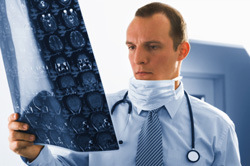Dental data predicts onset of osteoporosis
The condition of osteoporosis where bone mineral density is reduced means that the patient may be more prone to fractures and breaks. Unfortunately, this situation may only be apparent once the bone has been broken resulting in a large cost for health care and time for convalescence for the sufferer. The answer is for therapy to be applied but diagnosis by bone densitometry is not readily available for all the population. The OSTEODENT project aimed to investigate whether dental radiographs could be used to predict bone mineral density. They used data from 600 pre-menopausal women to analyse the reliability of using dental radiographs. Results of bone densitometry scans from spine and hip were compared with measurements from dental radiographs. This was based on the premise that the two-dimensional trabecular pattern can reliably reflect changes in the three-dimensional dimensions of the jaw bone. A Netherlands based team from ACTA aimed to test software they had developed to analyse the accuracy of prediction of bone mineral density (BMD) from changes in the trabecular pattern. The initial processing of information from the large number of radiographs was automated. This enabled the team to include radiographs that incorporated a small region of overlapping teeth. Analysis showed that this did not affect the outcome of the parameters in the image. A large range of images could therefore be processed and the full data set was therefore included in the analysis. Analysis using software for the reliability of prediction of BMD (bone mineral density) values from the trabecular pattern showed a range of change of 0.77 to 0.82. These results then indicate that dental radiographs can be a reliable method to predict BMD values. Moreover, this is a more accessible method than bone densitometry.



